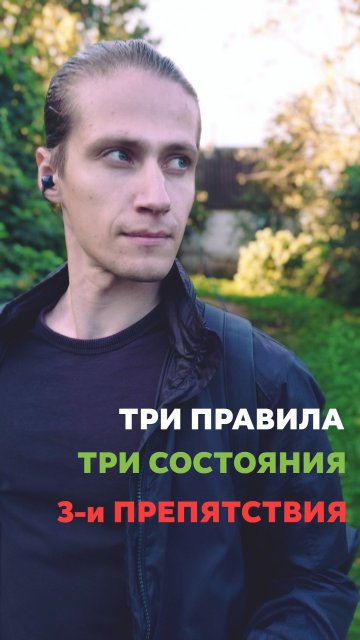Information
Now let's move on to diagnostics.
Let's put two points on an imaginary plane. Point A is where I am now, point B is where I want to be (where my goals, which I wrote down a few days earlier, will lead me). The distance between point A and point B indicates the difference between your current state and what you want. Having weighed what is at point A, you will understand how many times further point B. And by this parameter you can determine which area you need to pay attention to (what to work with next).
The first obstacle is the state of low resource availability.
Using the example of money, suppose that now, on average, an amount of 40,000 rubles is available to me, but I really want to dispose of an amount of 1,000,000 rubles. This means that the distance to point B is 25 times greater than the one already traveled.
Or I want to be fluent in foreign languages from the ground up. Under normal conditions, I can allocate at most 10-15 minutes a day for its study, which means that to fully learn the language I will need about 550 days (1.5 years) and this is without gaps. That is, my point A is 550 times farther than my point B.
Whenever the desired goal is many times greater than the existing result (according to your own assessment), this indicates that you are starting with a state of low resource capacity in that area. The main criterion for this condition is that you need something that is many times, tens or hundreds of times higher than what is available according to your assessment.
Takeaway: If you meet the first obstacle, you need to work on the first rule, that is, learn how to save.
The second obstacle is a state of low potential.
I have some savings to change, let's say 1,000,000 rubles, and I want to learn how to steadily increase them by at least 0.5-2 times, and this skill will be enough for me, because I am already satisfied with the available results.
Or, I already have good skills in a foreign language, but now I want to speak without an accent, or express my thoughts more accurately and understand another person faster.
Every time when the desired goal slightly exceeds the existing result, only several times and I have difficulty in achieving it, reaching a certain ceiling, this indicates a state of low potential
Conclusion: I need to pay attention to rule # 2. There is a mistake in what I am doing.
The third obstacle is the state of latent possibilities.
Already possessing 2,000,000 rubles. and having constant income, increasing stocks, I suddenly realize that I can act dozens of times more efficiently, investing my resources in such a way that the results will far exceed the usual rate of growth. I get the feeling that there are hidden possibilities in my position. Everything is already good enough, and it could be much better, all that remains is to improve what I am doing, reaching a new level.
Or, being fluent in a second language, I understand that I can master two more new ones, seeing how they work and having the ability to quickly memorize.
When there is no understanding of how to achieve the desired goal, when everything is already good enough, and there is nothing fundamentally new in what you do and can do, this indicates a state of latent possibilities.
Conclusion: only in this case it makes sense to work with rule number 3. And only in this way will this work give the expected results that you can both show and hold in your hands, because it will be based on the two achieved levels of conservation and accumulation.
So, you see that your prana has three properties: persist (possession of what has been achieved), accumulate (quantitative growth) and improve (qualitative growth).
Therefore, on the basis of diagnosing your condition, your efforts should be distributed within one of three variations.
1st obstacle: saving 80% 15% saving 5% improvement.
2nd obstacle: 80% saving 15% improving 5% saving.
3rd obstacle: 80% improvement 15% saving 5% saving.
Next, I will give practices, with notes on which area they are directed, be it accumulation, preservation and improvement, and you can choose how intensively you include them in your life, depending on the obstacles.
Day 6 assignment: diagnose all your goals and determine what obstacles each of them face.






